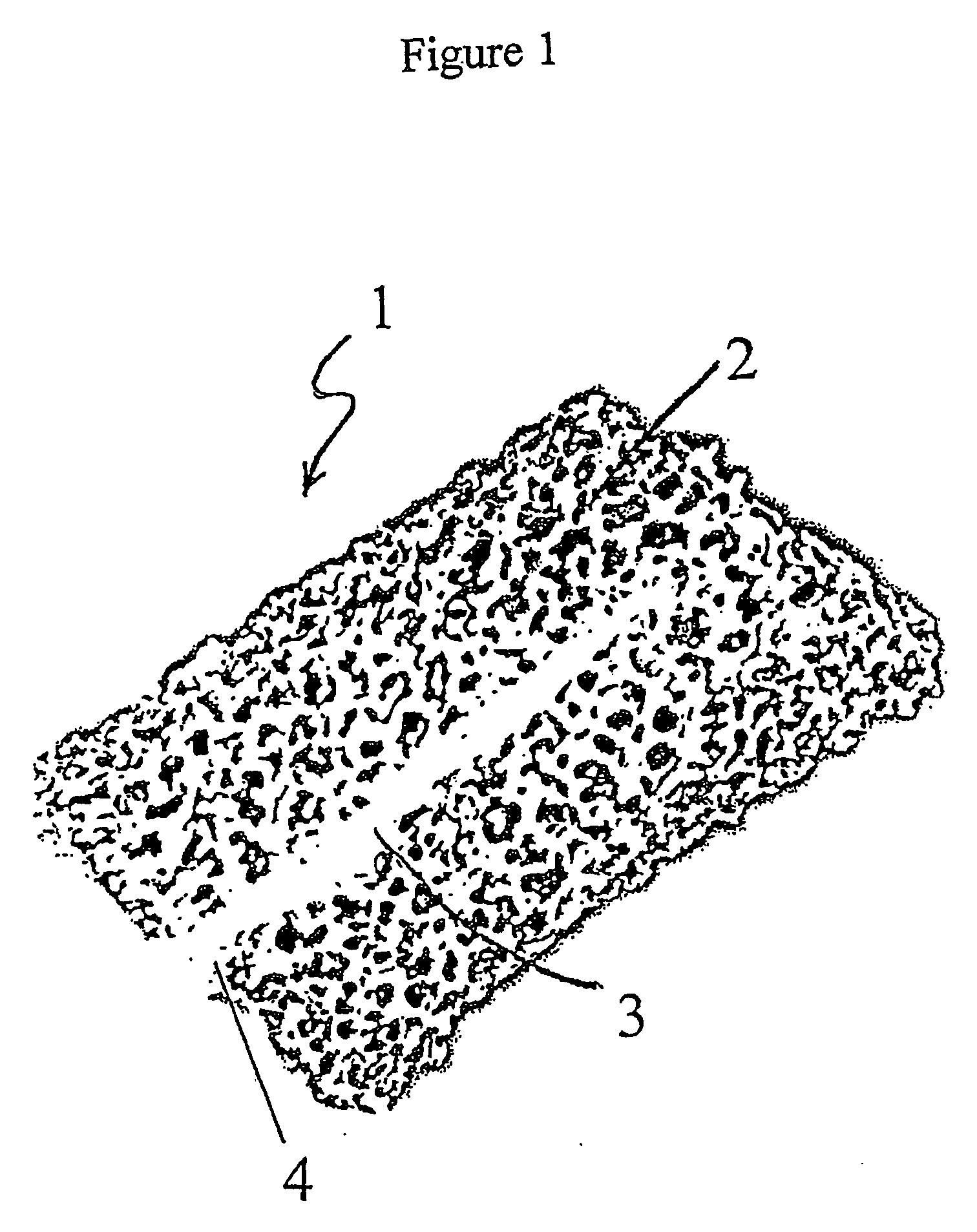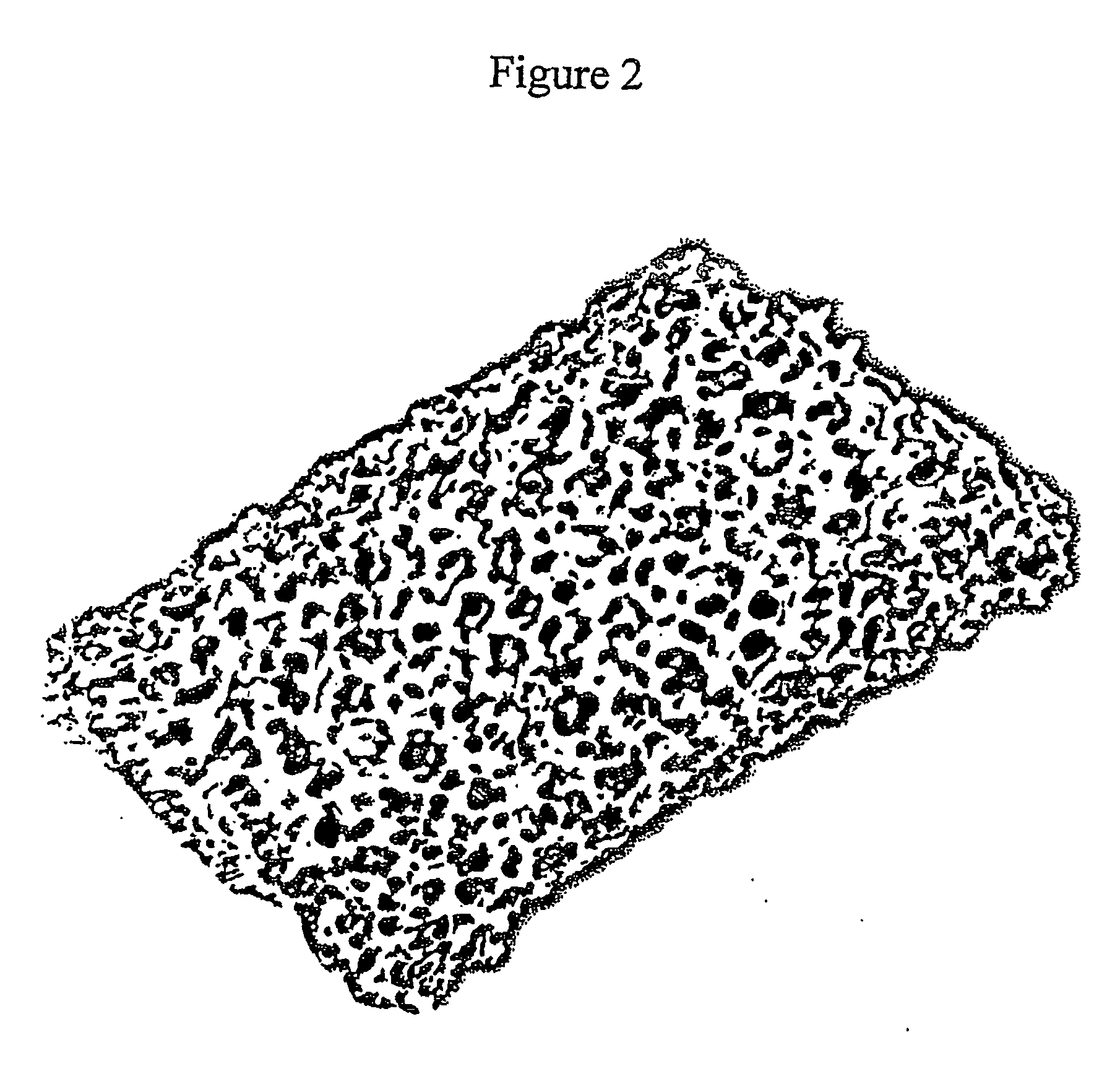Method for treatment of ischaemic tissue
a tissue and ischaemic technology, applied in the field of ischaemic cardiac tissue, can solve the problems of reducing tissue function, reducing tissue flow to the tissue, and reducing tissue function, so as to maintain tissue function, stimulate and/or restore the function of those cells, and reduce damage
- Summary
- Abstract
- Description
- Claims
- Application Information
AI Technical Summary
Benefits of technology
Problems solved by technology
Method used
Image
Examples
Embodiment Construction
[0068]FIGS. 1 and 2 illustrate two separate embodiments of the element. The sponge-like element is made from polyurethane that is porous, low density, non-degradable, absorptive and resistant to wear and tear by the constant beating of the heart. The sponge-like element has a low inflammatory potential and supports seeding or impregnation with cellular phenotypes. The compliance of the sponge-like element matches the mechanical properties of the myocardium. Compliance matching of the sponge-like element with myocardium tissue would reduce or prevent chronic inflammation in the myocardial tissue surrounding the implant. The pores 2 of the sponge-like element are between 50 and 200 microns in diameter, and are interconnected throughout the element. Recess 3 (in FIG. 1) extends along a substantial portion of the length of the element. FIG. 2 illustrates a similar sponge-like element but without the recessed portion.
[0069] In one embodiment, the recess of the element illustrated in FIG...
PUM
 Login to View More
Login to View More Abstract
Description
Claims
Application Information
 Login to View More
Login to View More - R&D
- Intellectual Property
- Life Sciences
- Materials
- Tech Scout
- Unparalleled Data Quality
- Higher Quality Content
- 60% Fewer Hallucinations
Browse by: Latest US Patents, China's latest patents, Technical Efficacy Thesaurus, Application Domain, Technology Topic, Popular Technical Reports.
© 2025 PatSnap. All rights reserved.Legal|Privacy policy|Modern Slavery Act Transparency Statement|Sitemap|About US| Contact US: help@patsnap.com



